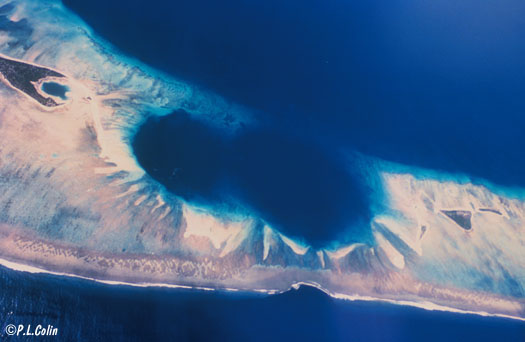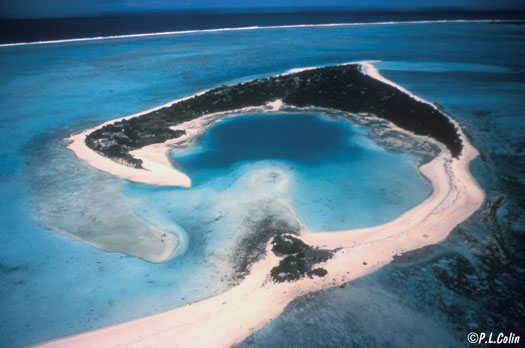
After World War II up until 1958, there were 43 nuclear tests at Enewetak Atoll and another 24 at Bikini, both in the northern Marshall islands. The local islanders were relocated to other atolls or islands before testing started. Although there were no further tests after 1958, it took until 1980 and an expensive clean-up operation before the Enewetakese were permitted to return, and the Bikinians are still not there yet. Other northern Marshalls atolls were also affected by fallout from tests. One of these, Rongelap, was evacuated a few years ago due to what some people think are continued health problems among the residents attributable to the fallout. Some of the tests certainly affected the physical structure of the reef. Two thermonuclear tests vaporized small islands and left large holes in the wide reef. The photo below shows craters on the northern reef of Enewetak Atoll from the Mike and Koa tests. Mike, the larger, was set off on a small reef island. The Mike crater was reported after the blast to be about 6,240 feet (1.9km) in diameter and 164 feet (50m) deep, and is connected to the lagoon at the top. Directly below Mike on the seaward side of the reef, a chunk of the reef has cracked off and fallen away.

At the left side of the photo above, there is a fission crater from the Seminole test on the western side of Boken island. Much smaller than Mike or Koa, it is about 200m in diameter. A closer photo is below.

There are a couple of other fission craters, one of which forms the crypt for contaminated debris and soil collected during the atoll's radiological cleanup, on the north end of Runit Island.
The photos above were taken from a gyrocopter by Patrick L. Colin, chief scientist of the Mid-Pacific Research Laboratory in the late '70s and early '80s.
Press the Back button to return to the previous page.